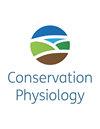Biological validation of faecal corticosterone metabolites as a non-invasive stress assessment in translocated California valley quail (Callipepla californica)
IF 2.6
3区 环境科学与生态学
Q2 BIODIVERSITY CONSERVATION
引用次数: 0
Abstract
Abstract US quail species are vulnerable to population declines as a result of climate change, habitat loss and habitat fragmentation, all of which can result in physiological stress. Additionally, population restoration techniques (PRTs), like translocations, also induce stress. Traditional assessments of avian stress hormone levels include capturing and handling birds to extract blood, methods that are inherently stressful and can compound stress analyses. However, the stress hormone corticosterone (CORT) is metabolized from the blood and excreted in faeces as faecal corticosterone metabolites (FCMs). FCMs have been used as a non-invasive measurement of stress hormone levels in a variety of species, but must be validated for each species. The objective of this study was to biologically validate the use of FCMs as a non-invasive measurement of CORT levels in California valley quail (Callipepla californica). Reference and treatment quail were acclimated for 3 weeks in an outdoor aviary. Subsequently, treatment quail were subjected to a simulated 48-h translocation, a common and stress hormone-inducing PRT. Faecal samples were collected every 4 h and processed using an enzyme immunoassay. Mean FCM concentrations of treatment quail (41.50 ± 16.13 ng/g) were higher than reference FCM concentrations (24.07 ± 10.4 ng/g). These results biologically validate the use of FCMs as a non-invasive method to assess CORT levels in California valley quail, demonstrate diurnal variation in quail CORT levels, and confirm that quail translocations are a stress-inducing PRT. Ultimately, this research validates a new non-invasive tool for stress response measurement to advance quail research, management and conservation.将粪便皮质酮代谢物作为一种非侵入性应激评估方法对迁移的加州山谷鹌鹑(Callipepla californica)进行生物学验证
摘要 美国的鹌鹑物种很容易因气候变化、栖息地丧失和栖息地破碎化而导致种群数量下降,所有这些因素都会造成生理压力。此外,迁移等种群恢复技术(PRTs)也会引起应激。对鸟类应激激素水平的传统评估包括捕捉和处理鸟类以提取血液,这些方法本身就会造成应激,并可能使应激分析复杂化。然而,应激激素皮质酮(CORT)会从血液中代谢出来,并以粪便皮质酮代谢物(FCMs)的形式随粪便排出体外。粪皮质酮代谢物已被用作多种物种应激激素水平的无创测量方法,但必须针对每个物种进行验证。本研究的目的是对使用 FCMs 作为加州山谷鹌鹑(Callipepla californica)体内 CORT 水平的无创测量方法进行生物验证。参考鹌鹑和治疗鹌鹑在室外鸟舍适应 3 周。随后,对治疗鹌鹑进行 48 小时的模拟迁移,这是一种常见的应激激素诱导 PRT。每 4 小时收集一次粪便样本,并使用酶免疫测定法进行处理。处理鹌鹑的平均 FCM 浓度(41.50 ± 16.13 纳克/克)高于参考 FCM 浓度(24.07 ± 10.4 纳克/克)。这些结果从生物学角度验证了使用 FCM 作为评估加州山谷鹌鹑体内 CORT 水平的非侵入性方法,证明了鹌鹑体内 CORT 水平的昼夜变化,并证实了鹌鹑迁移是一种应激诱导 PRT。最终,这项研究验证了一种新的非侵入性应激反应测量工具,可促进鹌鹑的研究、管理和保护。
本文章由计算机程序翻译,如有差异,请以英文原文为准。
求助全文
约1分钟内获得全文
求助全文
来源期刊

Conservation Physiology
Environmental Science-Management, Monitoring, Policy and Law
CiteScore
5.10
自引率
3.70%
发文量
71
审稿时长
11 weeks
期刊介绍:
Conservation Physiology is an online only, fully open access journal published on behalf of the Society for Experimental Biology.
Biodiversity across the globe faces a growing number of threats associated with human activities. Conservation Physiology will publish research on all taxa (microbes, plants and animals) focused on understanding and predicting how organisms, populations, ecosystems and natural resources respond to environmental change and stressors. Physiology is considered in the broadest possible terms to include functional and mechanistic responses at all scales. We also welcome research towards developing and refining strategies to rebuild populations, restore ecosystems, inform conservation policy, and manage living resources. We define conservation physiology broadly and encourage potential authors to contact the editorial team if they have any questions regarding the remit of the journal.
 求助内容:
求助内容: 应助结果提醒方式:
应助结果提醒方式:


